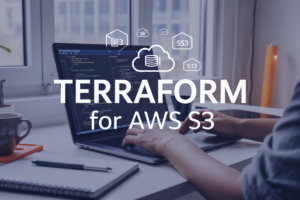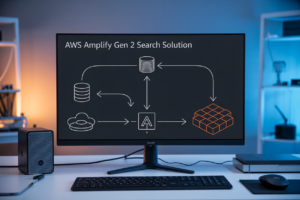AWS Lambda functions can connect to your VPC resources, but setting up AWS Lambda VPC networking properly makes the difference between a smooth deployment and hours of troubleshooting. This guide is for AWS developers and DevOps engineers who need to connect Lambda functions to DynamoDB and RDS databases while maintaining security and performance.
Getting Lambda VPC configuration right involves more than just dropping your function into a subnet. You need to understand how VPC endpoints for Lambda work, how to set up the right AWS Lambda security groups, and why your Lambda subnet configuration affects everything from cold start times to database connection limits.
We’ll walk through optimizing DynamoDB VPC access patterns so your functions can reach DynamoDB without internet gateways, plus show you how RDS Lambda connection pooling prevents you from hitting database connection limits. You’ll also learn practical AWS Lambda network troubleshooting techniques to debug connectivity issues before they hit production.
By the end, you’ll know how to design Lambda VPC networking that’s secure, fast, and reliable for your database workloads.
Understanding AWS Lambda VPC Connectivity Fundamentals
Lambda execution environment networking basics
AWS Lambda runs in a serverless execution environment that operates outside your VPC by default. When Lambda functions need access to VPC resources like RDS databases or private subnets, they require specific AWS Lambda VPC networking configuration. The Lambda service creates Elastic Network Interfaces (ENIs) in your designated subnets, establishing secure connectivity between the serverless function and your private network infrastructure. Each function execution reuses these ENIs when possible, but initial ENI creation adds latency to cold starts.
VPC integration benefits and trade-offs
VPC integration provides secure access to private resources while maintaining network isolation and control. Functions can connect directly to RDS instances, ElastiCache clusters, and other VPC-only services without exposing them to the internet. However, Lambda subnet configuration requires careful planning as functions lose direct internet access unless you provide NAT Gateway routing. This setup increases complexity and costs while potentially impacting performance due to additional network hops and ENI management overhead.
Cold start implications with VPC connections
VPC-connected Lambda functions experience longer cold starts due to ENI provisioning and attachment processes. AWS has significantly reduced this penalty through ENI pre-warming and reuse mechanisms, but initial function invocations still face delays ranging from several hundred milliseconds to a few seconds. Functions sharing the same security group and subnet combinations benefit from ENI reuse, making architectural decisions around network configuration crucial for performance optimization.
Security considerations for Lambda VPC access
AWS Lambda security groups control inbound and outbound traffic for VPC-connected functions, acting as virtual firewalls at the ENI level. Functions inherit the security posture of their assigned subnets and must follow least-privilege principles when configuring network access rules. Private subnet deployment prevents direct internet exposure while allowing controlled outbound connectivity through NAT instances or gateways. Network ACLs provide additional subnet-level protection, creating defense-in-depth strategies for sensitive workloads accessing databases and internal services.
Configuring Lambda for Secure VPC Access
Setting up VPC configuration parameters
AWS Lambda VPC configuration requires specifying your target VPC ID, subnet IDs, and security group IDs in the function configuration. The Lambda service creates elastic network interfaces (ENIs) in your chosen subnets, enabling secure communication with VPC resources like RDS databases and private DynamoDB VPC endpoints. Configure these parameters through the AWS Console, CLI, or Infrastructure as Code tools like CloudFormation or Terraform.
Subnet selection strategies for optimal performance
Choose private subnets across multiple Availability Zones for high availability and fault tolerance. Place Lambda functions in the same AZ as your RDS instances when possible to reduce latency. Reserve dedicated subnets for Lambda functions to avoid ENI exhaustion issues that can impact other VPC resources. Monitor ENI usage patterns and scale subnet capacity accordingly to prevent cold start delays.
Security group configuration best practices
Create dedicated security groups for Lambda functions with minimal required permissions following the principle of least privilege. Configure outbound rules to allow HTTPS (443) for AWS API calls, database ports (3306 for MySQL, 5432 for PostgreSQL) for RDS access, and DNS resolution (53). Avoid using the default security group and implement separate groups for different function types. Enable VPC Flow Logs to monitor network traffic patterns and identify security anomalies in your Lambda VPC networking setup.
Optimizing DynamoDB Access from Lambda within VPC
VPC Endpoints for DynamoDB connectivity
Creating a VPC endpoint for DynamoDB eliminates internet gateway dependency while maintaining secure, high-performance database connections. Configure gateway endpoints through your VPC console to route DynamoDB traffic privately within AWS’s backbone network. Update route tables to direct DynamoDB requests through the endpoint, ensuring Lambda functions access tables without traversing public internet infrastructure. Security groups and NACLs control endpoint access, while endpoint policies provide granular permission management for specific DynamoDB actions and resources.
Reducing latency with regional optimization
Deploy Lambda functions in the same AWS region as your DynamoDB tables to minimize cross-region data transfer delays. Choose availability zones strategically, placing Lambda subnets close to DynamoDB infrastructure for optimal AWS Lambda DynamoDB connectivity. Enable DynamoDB Global Tables for multi-region applications, but prioritize local table access patterns. Configure Lambda reserved concurrency to prevent cold start latency spikes during high-traffic periods. Use DynamoDB DAX caching clusters within your VPC for microsecond-level read performance improvements.
Cost-effective data transfer strategies
VPC endpoints eliminate data processing charges for DynamoDB traffic since requests never leave AWS’s internal network. Right-size your Lambda VPC configuration by removing unnecessary subnets and endpoints to reduce NAT gateway costs. Implement efficient batch operations using DynamoDB’s BatchGetItem and BatchWriteItem APIs to minimize individual request overhead. Schedule non-critical data operations during off-peak hours to take advantage of lower pricing tiers. Monitor data transfer patterns using VPC Flow Logs to identify optimization opportunities.
Monitoring DynamoDB connections from Lambda
CloudWatch metrics track DynamoDB request latency, error rates, and throttling events from your Lambda VPC networking setup. Enable X-Ray tracing to visualize connection paths and identify performance bottlenecks in your AWS Lambda network troubleshooting workflow. Set up custom CloudWatch dashboards displaying DynamoDB consumed capacity, Lambda duration, and VPC endpoint utilization metrics. Configure alarms for connection timeouts, throttling exceptions, and elevated error rates. Use VPC Flow Logs to analyze network traffic patterns and validate endpoint routing behavior.
Establishing Reliable RDS Connections from Lambda
Database connection pooling techniques
Connection pooling becomes critical when running Lambda RDS database connection at scale. Each Lambda execution creates new database connections, quickly exhausting RDS connection limits. Implement connection pooling libraries like mysql2 for Node.js or psycopg2 with connection reuse for Python. Store pooled connections in Lambda’s global scope outside the handler function to reuse them across invocations. Amazon RDS Proxy provides managed connection pooling, automatically managing database connections and reducing the overhead on your RDS instances while maintaining security through IAM authentication.
Managing connection limits and timeouts
RDS instances have finite connection limits that Lambda functions can easily overwhelm during concurrent executions. Configure Lambda reserved concurrency to prevent connection exhaustion – typically set to 80% of your RDS max connections divided by expected connections per function. Set aggressive connection timeouts (5-10 seconds) to prevent hanging connections. Monitor CloudWatch metrics for DatabaseConnections and ConnectionAttempts to identify bottlenecks. Use exponential backoff retry logic when connection limits are reached, allowing your AWS Lambda network troubleshooting efforts to focus on actual configuration issues rather than capacity constraints.
Multi-AZ RDS considerations for Lambda
Multi-AZ RDS deployments require careful Lambda subnet configuration to maintain connectivity during failovers. Deploy Lambda functions across multiple subnets in different Availability Zones to ensure continued database access when the primary RDS instance fails over. Configure your application to handle temporary connection failures gracefully with retry logic, as failovers typically complete within 60-120 seconds. Update your security groups to allow Lambda subnets to reach RDS endpoints in all configured AZs. Monitor RDS failover events through CloudWatch and implement health checks that can distinguish between network issues and legitimate failover scenarios.
Secrets Manager integration for database credentials
Secrets Manager provides secure, rotatable credential storage for RDS Lambda connection pooling scenarios. Create database secrets with automatic rotation enabled and grant your Lambda execution role secretsmanager:GetSecretValue permissions. Cache retrieved credentials in Lambda global variables with a TTL to reduce API calls while respecting rotation schedules. Use the AWS SDK to retrieve secrets at runtime rather than hardcoding credentials in environment variables. Implement proper error handling for secret retrieval failures and consider using VPC endpoints for Secrets Manager to reduce latency and improve security within your AWS Lambda VPC networking architecture.
Performance Tuning and Troubleshooting Network Issues
Identifying Network Bottlenecks and Latency Sources
Network performance issues in AWS Lambda VPC networking often stem from cold starts, ENI (Elastic Network Interface) provisioning delays, and suboptimal routing configurations. Lambda functions experience significant latency when establishing new connections to DynamoDB or RDS instances, particularly when connection pooling isn’t implemented. DNS resolution delays, security group misconfigurations, and improper subnet placement across availability zones create additional bottlenecks. VPC endpoints for DynamoDB can eliminate internet gateway routing overhead, while RDS Proxy reduces connection establishment time by maintaining persistent database connections.
Implementing Connection Reuse Patterns
Connection pooling dramatically improves Lambda performance by reusing existing database connections across function invocations. For RDS Lambda connection pooling, implement connection objects outside the handler function to leverage Lambda’s execution context reuse. Set appropriate connection timeout values and maximum pool sizes to prevent connection exhaustion. DynamoDB benefits from reusing the AWS SDK client instance, which maintains HTTP connection pools internally. Configure keep-alive settings and implement exponential backoff with jitter for failed connections. Connection validation and cleanup mechanisms ensure stale connections don’t impact performance.
Debugging VPC Flow Logs and CloudWatch Metrics
VPC flow logs provide detailed network traffic analysis for AWS Lambda network troubleshooting scenarios. Enable flow logs at the VPC, subnet, or ENI level to capture accepted, rejected, or all traffic patterns. Analyze source and destination IP addresses, ports, and protocols to identify connection failures between Lambda and database services. CloudWatch metrics like Duration, Invocations, and Errors correlate with network performance issues. Custom metrics tracking connection establishment time, query execution duration, and retry attempts help pinpoint bottlenecks. Lambda Insights provides detailed performance data including network utilization and connection pool statistics.
AWS Lambda’s networking capabilities within VPCs open up powerful possibilities for connecting to your database resources securely. We’ve explored how proper VPC configuration creates a secure bridge between your Lambda functions and critical data stores like DynamoDB and RDS. The key is getting your subnets, security groups, and NAT gateways set up correctly from the start, which saves you from headaches down the road.
Performance optimization makes all the difference in real-world applications. Connection pooling for RDS, using VPC endpoints for DynamoDB, and monitoring your network metrics will keep your Lambda functions running smoothly. Start with these foundational networking concepts, test your connections thoroughly, and don’t forget to monitor performance as your application scales. Your future self will thank you for taking the time to build a solid networking foundation today.




















